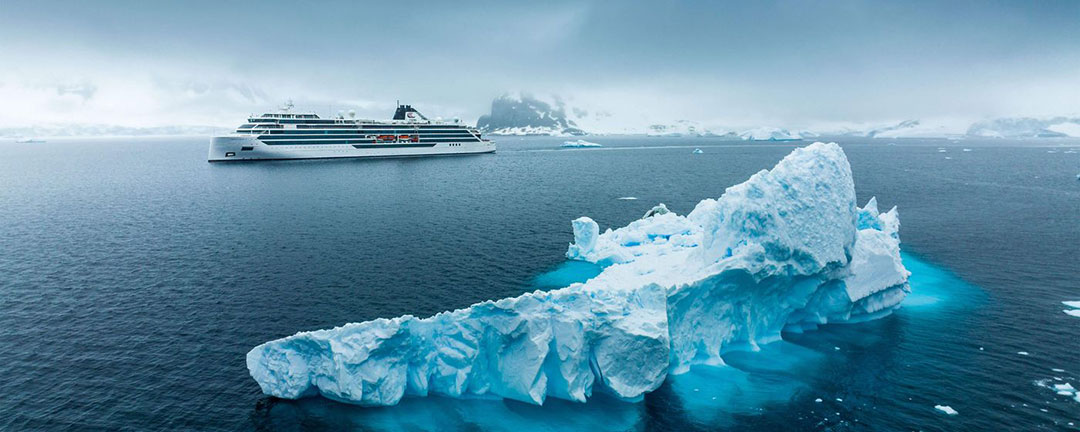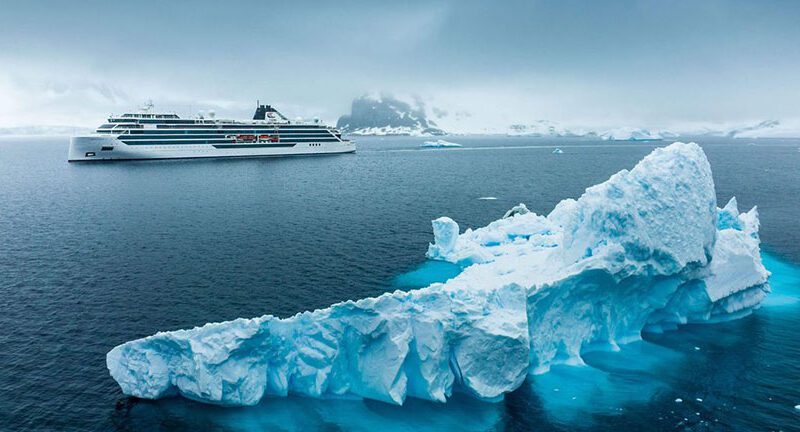
As the cruise industry recovers from the COVID pandemic travelers are exploring parts of the world that a relative few people have ever seen, serious safety concerns are being raised after a recent revelation that that four U.S. citizens had died on Antarctic cruises over the course of two weeks.
On February 2, the U.S. Coast Guard and the National Transportation Safety Board announced that investigations were being conducted into the deaths, which occurred on foreign-flagged vessels in Antarctic waters between November 15 and December 1 of last year.
Two people died when an inflatable boat from the Portuguese-flagged passenger vessel World Explorer capsized with six passengers, while the ship was anchored near Elephant Island, Antarctica. Portugal is the lead investigative state, and the Coast Guard, with support from the NTSB, is conducting a marine casualty investigation as a ‘substantially interested state.’
Another individual died from an injury sustained aboard the Netherlands-flagged passenger vessel Plancius. The Coast Guard is conducting a marine casualty investigation in coordination with officials from the Netherlands and the Falkland Islands.
A fourth U.S. citizen was killed and four others were injured when the Norwegian-flagged, 378-passenger ‘expedition ship’ Viking Polaris was struck by a large wave while transiting Drake Passage off Cape Horn. In another incident connected with the same ship, a U.S. citizen was injured when an inflatable boat sustained a keel-bladder failure near Damoy Point, Antarctica. Norway is the lead investigative state in those incidents, while the Coast Guard and the NTSB are conducting a joint marine casualty investigation.
The names of the victims are not being released at this time but will be made available to the public after the investigation is closed, according to Coast Guard Activities Europe commanding officer, Capt. Gretchen Bailey.
“The safety of U.S. passengers aboard ships throughout the globe is a priority for the Coast Guard and they are proud to work alongside the NTSB and our international partners to investigate these incidents and make meaningful safety improvements for worldwide passenger vessel operations, especially in unique high-risk environments such as the Antarctic.”
Commander Daniel Schrader, public affairs officer for the Coast Guard Atlantic Area, said the Coast Guard has “the authority and responsibility to conduct marine casualty investigations involving U.S. citizens on foreign-flagged passenger vessels outside of territorial waters,” adding that the authority is clarified in Coast Guard NVIC 05-17.
“U.S. Coast Guard marine safety investigations identify causal factors that contributed to accidents which may be addressed through various avenues. Examples of investigation outcomes may include marine safety alerts to the maritime community including ship operators or other government authorities, or issuance of safety recommendations to prompt domestic and international shipping regulatory, guideline review, and/or improvements,” Schrader told Professional Mariner.
Jennifer Gabris, who works in media relations for the National Transportation Safety Board, said under the International Maritime Organization’s Casualty Investigation Code, the agency’s Office of Marine Safety works with the Coast Guard when there are serious marine casualties involving U.S. citizens aboard foreign-flagged vessels sailing in international waters.
Estimates for the completion of the investigations into the fatal incidents are not yet available with officials saying those timelines can be influenced by a number of factors, including the complexity of the event, the availability of evidence, and the depth and specialty of required analysis.
“This incident involved an accidental fall on our vessel Plancius that did not take place during any activity or landing. Medical support was provided immediately, after which we arranged an evacuation. Unfortunately, however, these measures were not sufficient to change the tragic outcome of the accident,” stated Franklin Braeckman Antarctic Program Manager for Netherlands-headquartered Oceanwide Expeditions. “We deeply regret this unfortunate accident and wish to express our heartfelt condolences to the family and friends of the departed.”
Responding to a query about the incident aboard the Plancius, Braeckman stated that “mandatory safety briefings are held both before and during” every voyage.
“Every voyage starts with those briefings related to life on board a vessel, as well as landings and operations. Our staff are also actively following those guidelines and checking for compliance with those guidelines throughout the course of the trip,” Braeckman said. “We also always have a doctor on board, knowing that we sail in a very remote region. Because of all these precautions and measures, accidents are very limited during our voyages.”
Between 4,000 and 4,500 people sail to Antarctica with Oceanwide Expeditions each season. The company has offered cruises to the Arctic and Antarctica for 30 years and currently operates a trio of vessels − the Plancius, Ortelius, and Hondius – on cruises to Antarctica.
Plancius and Ortelius both measure 295 feet in length and have accommodations for 108 passengers each. The Polar Class 6, 350-foot Hondius has a capacity of 170 passengers.
International maritime law restricts cruising in Antarctic waters and vessels carrying more than 500 passengers are prohibited from landings.
For ships such as the Plancius, Ortelius, and Hondius that carry fewer passengers, no more than 100 are allowed ashore at one time with a guide-to-passenger ratio of no more than 1:20. Tour operators are also required to coordinate their itineraries so that no more than one vessel visits a landing site at one time.
Although it is expected that sales for cruises to Antarctica will rise as COVID pandemic fears subside and expedition travel continues to trend, industry leaders say there has been an interest in cruising to the continent for decades.
According to a fact sheet published by the 50-member International Association of Antarctica Tour Operators, the industry reached a new peak of 56,168 visitors in 2018-2019, prior to the pandemic. Most travelers to the continent have traditionally been from North America and other English-speaking countries, but there are increasing numbers of visitors from emerging markets such as China.
Tourists interested in traveling to Antarctica are advised to travel with companies that are members of the Rhode Island-headquartered organization.
Miami, Fla.-based cruise expert Stewart Chiron has sailed on more than 300 cruises, including 32 since the industry restart in 2021.
Modern liners sailing in both Antarctic and Arctic waters “are safer and offer more accommodations,” he says, adding that Antarctica can still be difficult.
“It’s not seven to 10 days through smooth water,” Chiron said. “The seas can be rough.”

